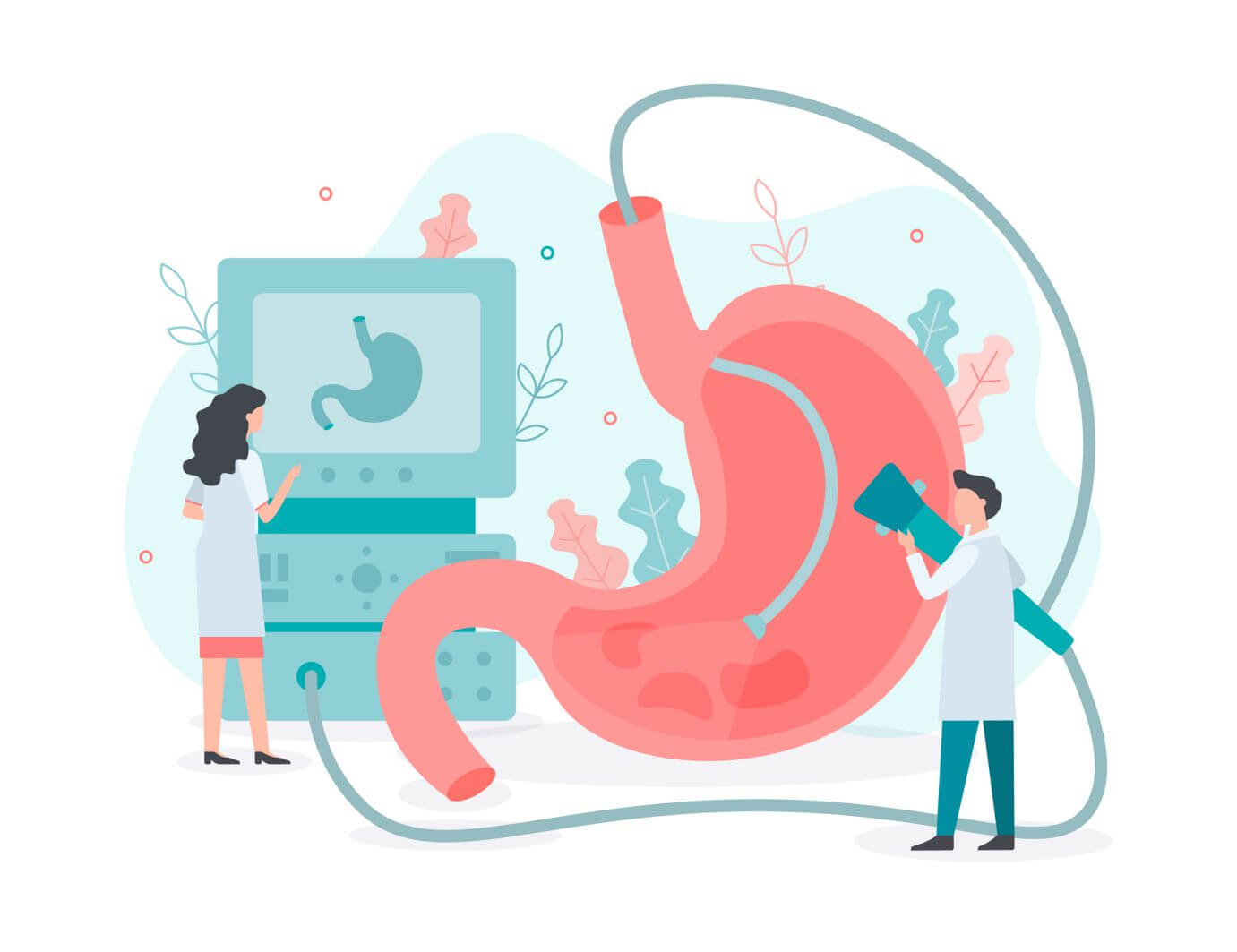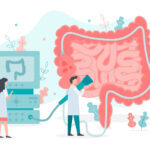
A gastroscopy is a procedure in which a thin flexible tube with a camera attached on its end, called a gastroscope, is inserted into your mouth and down your throat, allowing your doctor to examine your esophagus, stomach, and duodenum for any abnormalities. Throughout the process, they will usually take a few miniscule pieces of your tissue to send to a lab for a more detailed analysis. You will be given a sedative in order to help you stay comfortable for the entire duration.
The procedure itself lasts approximately 15 minutes, and you should be prepared to spare around 2 hours for the entire process.
Why might you need a gastroscopy?
Your family doctor may refer you to us for a gastroscopy for the following reasons:
- Difficulty or painful swallowing
- Recurrent heartburn
- Abdominal or chest pain (that’s not heart related)
- Nausea and vomiting
- Vomiting blood
- Black tarry stool
- Iron deficiency and/or anemia
- Unexplained weight loss
What does a gastroscopy look for?
At an outpatient clinic, a gastroscopy is typically used to look for problems such as hiatal hernias, Barrett’s esophagus, ulcers, inflammation, H. pylori infection, celiac disease, and cancer. However, our doctors will pay attention to any and all abnormalities.
Potential Risks
In general, gastroscopies are very safe. Very rare complications include:
- Bleeding: if a tissue was taken during the procedure, bleeding may very rarely be difficult to control.
- Perforation: though a perforation of your upper GI tract may occur during a gastroscopy. Large ones may require hospitalization or surgery. This rarely occurs: only 1 in every 10,000 gastroscopies.
- Aspiration: fluids from your stomach may travel up your throat and flow into your lungs during the procedure. Following your gastroscopy preparation instructions significantly lowers the chance of this occurring.
- Reaction to anesthesia: each individual reacts differently when it happens. If you have a history of reacting to anesthesia, please let us know.
What you will experience on the day of your procedure
After checking in, our nurses will prepare you for the procedure and ask you a few questions related to your health. Alongside the sedative, you may be given something to numb the back of your throat. The procedure is done with you laying on your side. You will be asked to swallow the endoscope at the beginning, after which the doctor will gently guide it further down your throat to perform the procedure. When the gastroscopy is finished, you will be moved to our recovery room, where our nurses will carefully monitor your status as you relax and recover from the procedure. By the time you have fully recovered, your ride should be waiting for you in the lobby, and you can leave after a brief discharge session with one of our staff, where you will be given instructions on follow up appointments and possible treatments. You may feel some stomach and throat pain after your gastroscopy, this is normal and should pass in a few hours.
Important: If your throat was numbed, do not eat or drink until your gag reflex returns (usually 2 hours) in order to prevent choking. Those who received sedation should not drive a car, operate machinery, drink alcohol, or make any legal or financial decisions until the next day.
What happens after?
If you had any biopsies taken, it may take several weeks to get your results. You can check with your family doctor or us to get your lab results. You’ll be notified if there is a change to your follow up appointment date and treatment plan.
Please call your local emergency department if you experience any of the following after your gastroscopy:
- Fever or chills
- Chest pain
- Shortness of breath
- Difficulty swallowing
- Black, tarry stool
- Nausea or vomiting (especially if bloody)







